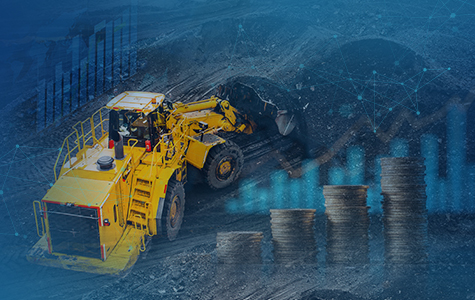Globally the mining industry has been grappling with a long phase of declining productivity. As per a 2015 study by consulting major McKinsey, worldwide mining operations are as much as 28 percent less productive today than a decade ago (even after adjusting for declining ore grades). At the centre of this productivity challenge is the high degree of variability & uncertainty associated with the mining industry – take for example, the nature of the resource being mined, the long hauls to move items from far flung mine pits to the destination plants & the frequent breakdown of vehicles in the tough terrains. Add to this is the fluctuating commodity prices (on a decreasing trend) that have squeezed margins of miners. In this context, there is an opportunity for miners to capitalize on the volumes of data generated in operations and leverage big data & advanced analytics to manage variability and enhance productivity.

With investments in mining automation and improvement in connectivity & speed (especially in the upcoming 5G era) enabling real time transfer of data from sensors, we can expect an explosion of mining related data. Modern big data platforms possess the ability to aggregate, cleanse and transform high volumes of data (structured and unstructured formats) available at different time frames from heterogeneous sources. Operational intelligence, predictive & prescriptive analytics gathered from this data holds great potential ability to ensure optimal ore extraction, uninterrupted flow of materials
across the supply chain and reduce time lost in maintenance & delays. Going a step further, analytics can also be used for short term price forecasting and maximize revenues for commodity traders in mining companies.
Efficiency in Ore Extraction
Using ore body modelling, sampling information and blast hole drill data, geoscientists are leveraging statistical techniques to improve discoverability of quality ore. Mining companies are also able to analyse variables in extraction processes and find out important drivers of yield. For example: small changes in the levels of dissolved oxygen in the leaching process have shown massive improvements in profit margins of gold mines.
Efficiency in Material Movement
Typically, mining throughput relies heavily on the efficiency of the LHD (load, haul & dumping machines) and predictable performance of trucks carrying the ore. An analysis of available hours, scheduled hours and utilization percentage of LHD machines and its causality with tons moved or average cycle time can prove as critical inputs for decision makers. Similarly, analysing historical records of temperature points of engine oil, coolants & hydraulics vis-à-vis outages or breakdowns of vehicles can help identify patterns in advance and carry out maintenance activities even before schedule. In addition to this, correlating queuing or wait times of trucks with the chosen route can also provide cues for road maintenance or traffic management activities.
Efficiency in Price Forecast
Most mining companies are comfortable with long term price forecasts. Traditionally based on demand supply models, traders in these mining companies factor mine development stage, capital expenditure, geopolitical stability and industry cost curves to forecast long term price trends. However, in the short term, the sellers i.e. mining companies heavily rely on experience based judgement and this can impact trading results (especially when the intermediary buyers i.e. trading houses rely on cutting edge analytics for this purpose). Even the most experienced sellers get it right 50% of the time (almost as good as making a random guess). The time has come for mining companies to explore usage of proprietary data (such as order volumes & stock levels) in ERP & CRM systems combined with third party data (such as satellite images on traffic & material flows) to predict market direction with higher accuracy.
The key to realizing such benefits of big data & advanced analytics lies in organization wide acceptance of digital transformation as a critical driver for mining sector growth. Seeing technological interventions as an end in itself and incorporating digital tools without a concrete vision in place may be myopic. The focus should always be on value creation and teams should be aligned to balance short term wins (plug and play deployments showing immediate results) and long term wins (scalability of benefits achieved by transformation in legacy systems and data architectures). Companies that can recognize the impact of this shift and embrace the inevitable change today will definitely rule the day tomorrow.


















































We will verify and publish your comment soon.